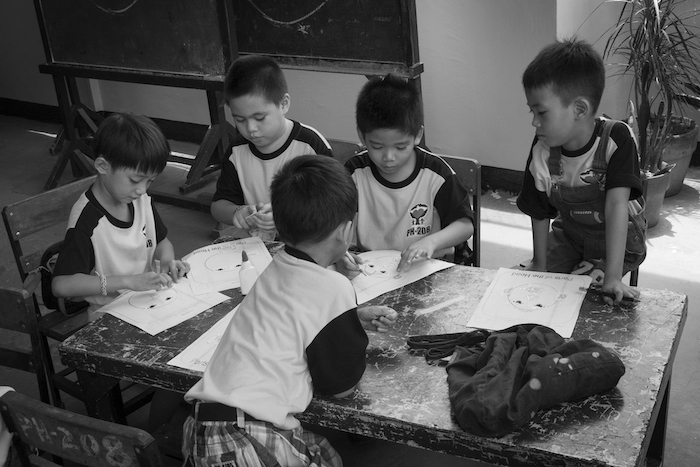What Philippines can learn from Finland about K-12 education
Many people are demanding the scrapping of the K-12 education curriculum because the added years to high school appear to have caused an extreme financial burden on poor families without any further scholastic impact on the students except for a prolonged secondary education.
There might be some truth to the complaints. And its abolition is now up for consideration by Vice President Sara Duterte because of a positive referral from President Ferdinand Marcos Jr.
As an educator, who holds several units in a Master's Degree in Educational Administration from the University of the Philippines College of Education, I think that the Department of Education (DepEd) rushed without preparation into a K-12 program, drastically shifting from the K-10 program, which was actually performing quite well.
The Philippines was not even ready for such implementation without having prepared its standardized instructional materials or training of their public school personnel and upgrading their faculty's competence. The main reason for the K-12 program was an averment that overseas employers believed OFWs to be under-qualified due to their K-10 education.
Just to stress several points, the State of Finland, which has the highest scholastic aptitude achievements in primary and secondary education in the world, has a basic K-9 program. Yet Finnish students have academically outperformed American, British, Japanese, Singaporean, Canadian, and Australian students on world aptitudes from primary to secondary education levels.
The length of their studies is not really essential or should not be unnecessarily prolonged for them to obtain employment. The intelligence quotient or scholastic aptitude of the students will remain the same whether they graduate from a K-9 or K-12 program.
There are rarely any assignments or homework, there are long recesses or socialization periods during mealtimes and designated leisure times, and thematic approaches with students verbalizing and discussing their lessons rather than the teachers.
Kinder or pre-school is a two-year period where children are mostly educated in parks, forests, or green schools, where they are encouraged to play and socialize.
High school offers vocational, technical, science, cultural, and humanities tracks. Such tracks already train their students for work after high school. Work opportunities are already available for high school graduates considering their level of maturity and academic scholasticism.
However, the state offers free and high-quality university education and provides incentives and subsidies for university students if the scholar aspires for higher education. So basic high school graduates aspiring to obtain university education or more technical or vocational education go through a middle school phase called a Gymnasium before entering university.
In other words, the length of their studies is not really essential or should not be unnecessarily prolonged for them to obtain employment. The intelligence quotient or scholastic aptitude of the students will remain the same whether they graduate from a K-9 or K-12 program.
It is the quality of education really that matters with highly committed and multi-disciplinary competent teachers who inspire students to participate and show academic initiatives and creativity.
So high school graduates are generally prepared for independent, constructive adult life by the time they finish high school studies at age 16, 17 or 18 years old. They can get easily employed locally.
Finnish gymnasium
As explained, the Finnish system has a gymnasium, which high school graduates do not have to take if they are only after local employment. But which they take if they opt for overseas employment or wish to take university studies, which are shortened into three years.
The gymnasium is Finland’s upper secondary education and is equivalent to the country’s senior high school, offering Grades 10 to 12.
Graduates of K-9 basic education can opt to pursue general upper secondary education or vocational upper secondary education depending on their aspirations. Only after finishing the gymnasium and passing the Matriculation Exams can they proceed to university courses.
But when they graduate from gymnasium, they are already employable, even for overseas employment. Their vocational upper secondary education leads to a vocational qualification.
Some opt to get employed and some opt to avail of the university program, often shortened because general college or university courses had already been offered in the gymnasium.

What the Philippines can do
DepEd seems to have been fed with ideas from Asian countries, which are equally poor educational performers—as if increasing the number of years in elementary and secondary school would increase their IQ or scholastic aptitudes.
It is time we stopped recruiting elitist religious brothers from De La Salle University or geriatric professors from UP as Education Secretaries if we want a more realistic, more socially oriented, and higher quality education in our schools.
We need education secretaries who are quite immersed in the education of the poor and are able to translate those educational needs and aspirations of our people into employment qualifications.
But having been implemented, the program of K-12 need not be totally abolished, if only to accommodate the reasons therefor. This means that the need for more technical qualifications, especially for vocational education must be addressed.
The K-12 program only needs to be integral to our educational system that accommodates the senior high school, or upper secondary education, to satisfy such needs through replication of a European or Scandinavian Gymnasium or the equivalent Western community college system.
Considering that we have required two more years for senior high school, Grades 11 and 12 could easily be converted into a community college course where students not yet ready to join the workforce can gain more technological and vocational expertise.
Thus, for students aspiring to have a K-12 education with vocational, technical, technological skills and knowledge, taking those two years of community college shall make them highly qualified for overseas or international employment.
These two grade levels of senior high school shall also be deemed as the first two years of community college. In a sense, its grade equivalency could be deemed the first two years of a four to six-year university education, depending as well on the scholastic aptitude of a student.
Meanwhile, the usual lengthy university education could be shortened due to accreditation of general subjects having already been taken up during that phase of middle school or upper secondary education.

Just to further guarantee that K-10 students are qualified at the very least for local employment, the two years of junior high school, specifically Grades 9 and 10 or third and fourth year, could already introduce and offer academic tracks or electives where the students can choose from to help them determine their interests or aspirations for future studies.
Our students who graduate from Grade 10 should be able to secure local employment already. Or they can proceed, if they desire, to two years of Community College which equals Senior High School but which are college or university accredited as general subject courses are concerned.
The usual lengthy university education could be shortened due to accreditation of general subjects having already been taken up during that phase of middle school or upper secondary education.
Community College is the key. The Scandinavians call it gymnasium, or a stand-in-between high school and university. They can call such gymnasium in the Philippines a community college, which is not yet on the level of university education but already higher than regular or basic High School Education.
It is thus suggested that when students finish their Grades 11 and 12 in a community college, they are provided with a certification of completion and automatically deemed as preparatory to university education.
Certainly, if they wish to take further college or university studies, then they will still have to take their university aptitude or Matriculation Exams to pursue a college or university degree. Universities, after all, impose their own scholastic standards.


